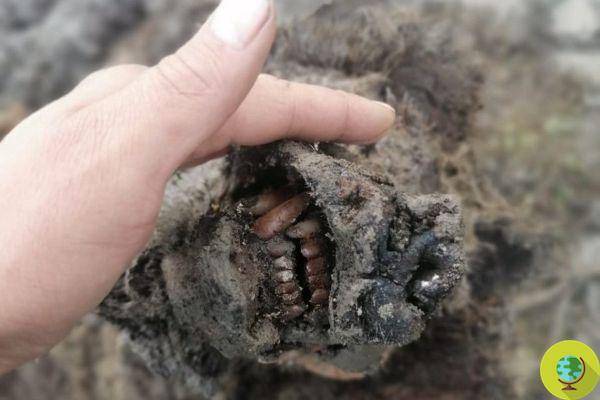
On the Lyakhovsky Islands, a team of scientists has discovered the perfectly preserved remains of an ice age cave bear
He is about to end up run over, his mother saves himIt is practically intact, although it even dates back to the Ice Age. On the Lyakhovsky Islands in Russia's far north, a team of scientists has discovered the perfectly preserved remains of an Ice Age cave bear.
In this remote place of the Russian Arctic world, in the islands that are part of the New Siberia archipelago, researchers from the Northeast Federal University of Yakutsk have been the protagonists of an exceptional find: it is in fact the first bear of this species ever. found with soft tissues intact.
In reality, the discovery is due to a group of reindeer herders but the presence of the bear has been reported to University researchers at the forefront of research on extinct woolly mammoths and rhinos and studies have started. According to the research team, the cave bear (Ursus spelaeus) is a prehistoric species or subspecies that lived in Eurasia in the Middle and Late Pleistocene period. This creature became extinct about 15.000 years ago but preliminary analysis suggests that the bear is between 22.000 and 39.500 years old, therefore in an even more remote era.
Thanks to the freezing Arctic temperatures, his body - including organs and soft tissues - remained intact. Even the nose is present. According to the scientists, this is a discovery of global significance as only the bones of cave bears have been found so far.
“Today this is the first and only discovery of its kind: an entire bear carcass with soft tissues. It is fully preserved, with all internal organs in place, including the nose. Previously, only skulls and bones were found. This find is of great importance to the whole world, ”said scientist Lena Grigorieva.
Scientists have not yet been able to visit the discovery site: the ancient carcass was found very far from Yakutsk, where the University is based.
Bolshoy Lyakhovsky Island, or Great Lyakhovsky, is the largest of the Lyakhovsky islands belonging to the New Siberian Islands archipelago between the Laptev Sea and the East Siberian Sea in northern Russia. Here, scientists have found remains of numerous animals dating back to ancient times but never so well preserved.
"Radiocarbon analysis is needed to determine the bear's precise age," said senior researcher Maxim Cheprasov of the Mammoth Museum's laboratory in Yakutsk.
A scientific program will be prepared for your comprehensive study which includes all modern methods of scientific research: molecular, cellular, microbiological genetics.
'The research is planned on a large scale like in the study of the famous mammoth Malolyakhovsky,' said Dr Grigorieva.
The only negative note. The discovery was made possible by the melting of permafrost, which in recent years has been advancing at an unprecedented rate. For this reason, remains of mammoths, woolly rhinos and various animals that lived thousands of years ago have also been found.
Sources of reference: Northeast Federal University (NEFU) of Yakutsk
READ also:
Mammoths: extinct due to climate change
A bird that remained frozen for 46 years was found in Siberia: it is the ancestor of the lark
Hungry polar bear found wandering in an industrial city in Siberia


























